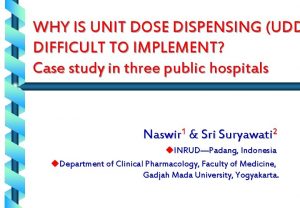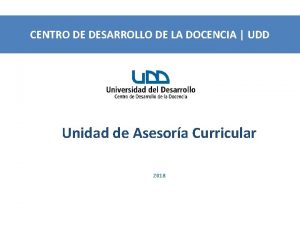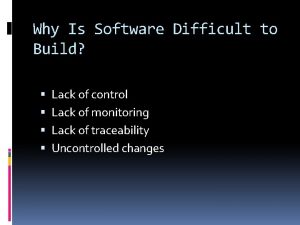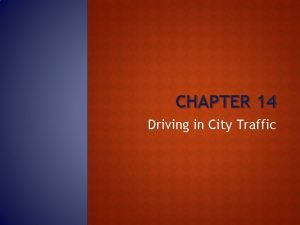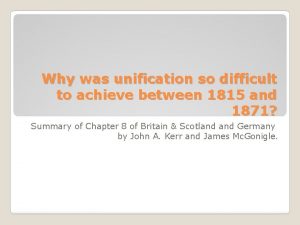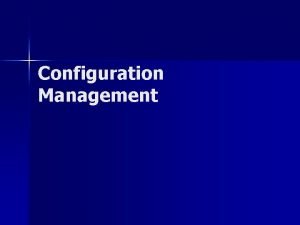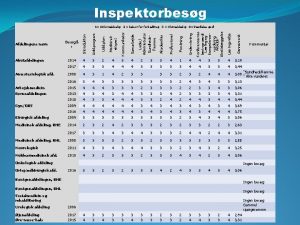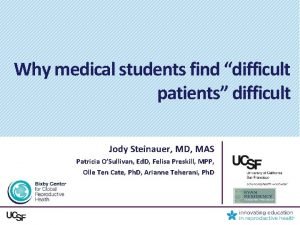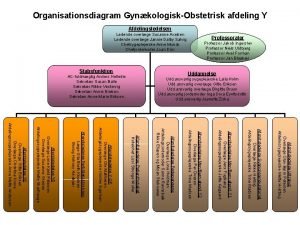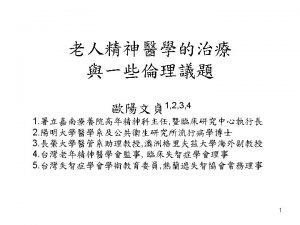WHY IS UNIT DOSE DISPENSING UDD DIFFICULT TO














- Slides: 14

WHY IS UNIT DOSE DISPENSING (UDD DIFFICULT TO IMPLEMENT? Case study in three public hospitals Naswir 1 & Sri Suryawati 2 u. INRUD—Padang, Indonesia u. Department of Clinical Pharmacology, Faculty of Medicine, Gadjah Mada University, Yogyakarta.

ABSTRACT Problem Statement: Unit-dose dispensing (UDD) is a system of drug distribution in hospitals that aims to increase efficiency, cost-containment, and the quality of drug delivery. Many studies at the national and international level have shown that this system provides advantages to the quality of service, to the patients and also to the hospitals. Yet at the time the study was undertaken, there were no hospitals in Indonesia that were using the system comprehensively. It was suspected that some inhibiting factors were behind this, which need to be identified and resolved. Objective: To find obstacles and opportunities for successfully implementing UDD. Design: Case study Setting and population: Three public hospitals in Indonesia which have already implemented UDD for at least 3 years in a particular ward. Outcome measures: Qualitative data obtained from observation, in-depth interview, and questionnaire with hospital directors, head of pharmacy departments, health providers, and patients. Results: The main inhibiting factors included the lack of facilities in the ward, incapability of staff responsible for drug distribution in the ward, and the most important, the lack of political will from the hospital management. The lack of facilities in the ward included inavailability of equipments for UDD implementation, assigned room for UDD activities, etc. The lack of incapability of staff included insufficient knowledge about UDD concept among health providers, and communication problem between provider and patient, or among providers. The lack of political will from the hospital management mainly due to the conflicts of interest between making profit and promoting efficient use of medicines, which are not yet solved properly. Conclusions: Although UDD has been proven useful, it is still very difficult to implement. Political will of the hospital managers, with a strong support from the director is the key factor of UDD implementation. To achieve this, the concept of UDD should be understood, by the hospital managers. To anticipate conflicts of interest, managerial intervention, such as improving the mechanism of incentive – desincentive, is also very much needed. Funding Source: self-funded

INTRODUCTION What is Unit Dose Dispensing (UDD)? v v Drugs distribution system for inpatients in hospitals Drugs which are packed in single dose and single package. Drugs which are given in one unit or one time using. Drugs which are available to use in 24 hours. Advantages (ASHP, 1986): v A reduction in the incidence of medication errors. v A decrease in the total cost of medication related activities. v A more efficient usage of pharmacy and nursing personal, allowing for more v v v direct patient care involvement by pharmacist and nurses. Improved overall drug control and drug use monitoring. More accurate patient billings for drugs. The elimination or minimization of drug credits. Greater control by the pharmacist over pharmacy work load pattern and staff scheduling. A reduction in the size of drug inventories located in patient care areas. Greater adaptability to computerized and automated procedures.

INDONESIA EXPERIENCE v Successful pilot studies: v To reduce the cost of medication for patient (Irmawati, 1993). v To increase efficiency of drug management (Sujarwoto, 1997). v To eliminate medication error (Widayati, 1998). v To reduce the time for UDD preparation (Budiarti, 2000). v Despite success in small-scale pilot studies, no hospital in Indonesia is nowadays implements UDD in hospital scale.

Objective To find obstacles and opportunities to institutionalize the UDD implementation.

Design v Case study in three public hospitals Identifying underlying factors of UDD implementation Management function (inputs, process, outputs) Of UDD implementation OPPORTUNITIES OBSTACLES Evaluation and recommendation How to implement UDD hospital-wide

Data collection v Types of data: qualitative, covering input, process, output v Method of data collection: observation, in-depth interview, questionnaire. v Data sources: v documents of drugs management in hospitals v employees including hospital director, head of pharmacy installation, health providers v patients v Data collector: staffs of drug distribution, pharmacist, nurses, pharmacist technicians

Characteristics of hospitals Hospital A v v v Type A Hospital, located in Surabaya, East Java Province Teaching hospital with 1150 patient beds. Bed Occupation Rate (BOR) ± 65%. Has 19 specialist and 14 sub specialist Departments. Has implemented UDD in a part of Pediatric Ward (74 beds) since 1988. Hospital B v v v Type B Hospital, located in Padang, West Sumatera Province Teaching hospital with 650 patient beds. Bed Occupation Rate (BOR) ± 70, 56%. Has 17 specialist and 6 sub-specialist Departments. Has implemented UDD in a part of VIP Ward (90 beds) since 1980. Hospital C v v v Type C Hospital, located in Brebes, Central Java Province District Hospital with 213 patient beds. Bed Occupation Rate (BOR) ± 62, 41%. Has 5 specialist Departments Has implemented UDD in one Ward since 1995.

FINDINGS: HOSPITAL A Facilities v Equipments to support UDD are not enough. To serve 74 beds, 5 trolleys are available v Inadequate room for UDD preparation v In parallel with UDD, patients also receive medications from other sources Staffing v 3 pharmacists, 4 pharmacy technicians and 1 non-medical staff v In continuous education about UDD concepts among health providers v Poor communication between provider-patient and providers-providers Managerial supports v No enforcement for UDD implementation v No explicit budget allocation for UDD implementation v Imbalance incentive-disincentive system, resulting in serious conflict of financial interest

FINDING: HOSPITAL B Facilities v Inadequate equipments to support UDD. To serve 90 beds, 12 small trolleys are available v Inadequate room for UDD preparation v In parallel with UDD, patients also receive medications from other sources Staffing v 3 pharmacists, 13 pharmacy technicians v Routine education about UDD concepts among health providers (twice a year) v Poor communication between providers-providers, due to frequent absence of the doctors Managerial supports v Enforcement for UDD implementation in a form of written Director Instruction v Inadequate budget allocation for UDD implementation v Conflict of financial interest still exists

FINDINGS: HOSPITAL C Facilities v Lack of equipments to support UDD. No medicine trolley, inadequate drug packaging v No room for UDD preparation v A private drug outlet exists in the Ward Staffing v 1 pharmacists, 1 pharmacy technicians v Education about UDD concepts was addressed to few health providers v Poor communication between providers-patients Managerial supports v Enforcement for UDD implementation in a form of written Director Instruction v No budget allocation for UDD implementation v Imbalance incentive-disincentive system, resulting in serious conflict of financial interest

Conclusions Facilities These three hospitals do not provide adequate equipments and rooms for UDD implementation. Lack of this support indicates that UDD implementation is not a priority. Staffing Most hospitals have inadequate number of pharmacists and pharmacy technicians to support UDD implementation, and the concepts of UDD does not disseminated thoroughly to all providers. Again, lack of this support indicates that UDD implementation is not a priority. Managerial support In most hospitals, there is practically no political supports from the hospital managers. Unwillingness to implement UDD is mostly due to serious conflict of financial interest.

Recommendations v Efforts should be sought to improve the understanding of hospital managers on the importance of good dispensing practices without sacrificing the hospital income. v Better balance between incentive and disincentive should be promoted by hospital managers to eliminate the conflict of financial interest. v Improving rational use of medicine should be supported by improving the work environment

Thank You
 Udd
Udd Which type of drug distributed by envelope method
Which type of drug distributed by envelope method Docencia pregrado udd
Docencia pregrado udd Udd
Udd Udd
Udd Udd
Udd Pictures
Pictures Why software difficult to build
Why software difficult to build Why is it more difficult
Why is it more difficult Why is city driving more difficult
Why is city driving more difficult Why was italian unification difficult to achieve
Why was italian unification difficult to achieve Why is software difficult to build
Why is software difficult to build Why does juliet kiss romeo’s lips?
Why does juliet kiss romeo’s lips? Lesson 2 our economic choices
Lesson 2 our economic choices Dont ask
Dont ask
